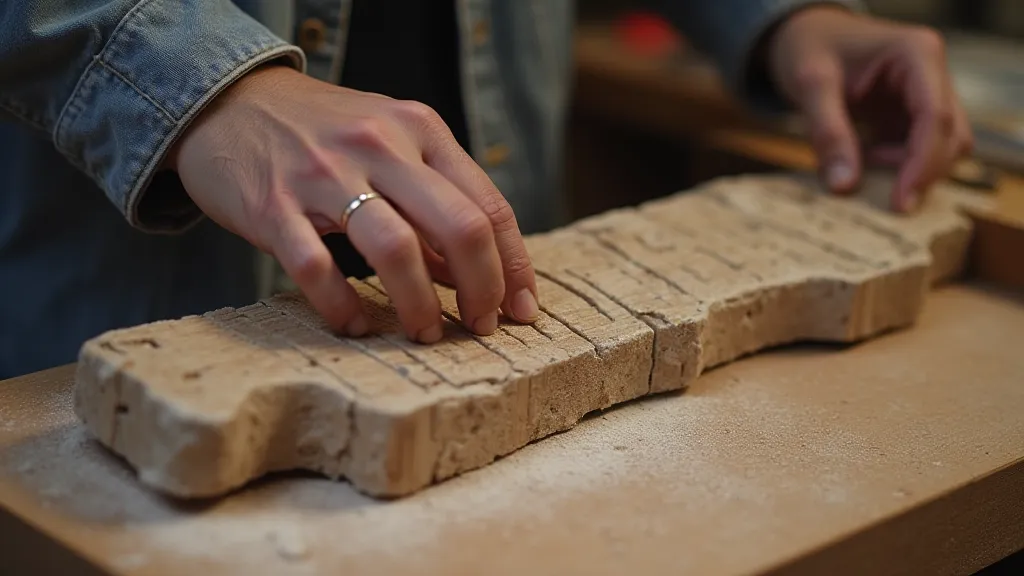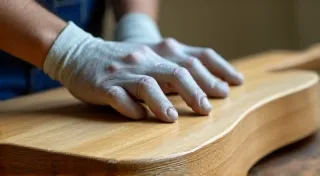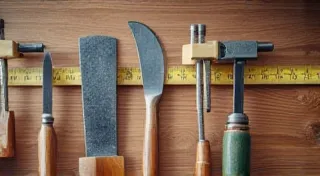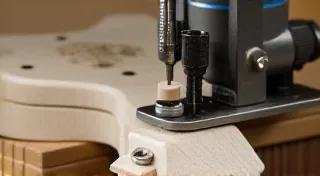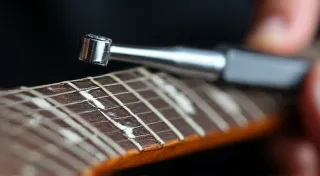Essential Tools for Building Your First Electric Guitar: A Budget-Friendly List
So, you're ready to embark on the exciting journey of building your very own electric guitar! That’s fantastic! One of the first questions that pops up is: “What tools do I need?” Building a guitar doesn’t require a massive investment in expensive, professional-grade equipment. This article outlines a practical list of essential tools, focusing on affordability and availability, perfect for beginners building their first guitar.
Before diving into the tools themselves, it's worth considering the broader scope of your project. Are you planning on tackling the entire build from scratch, including the neck? Building a guitar neck can be a complex and rewarding experience, but it does add another layer of precision and specialized tools to the process. If you're new to guitar building, you might want to consider a pre-made neck to simplify your first project.
The Must-Have Tools
We'll break down the tools into categories: Cutting, Shaping, Drilling/Fastening, and Finishing. We'll also offer suggestions for both hand tools and more affordable power tool options. Remember, starting with good quality hand tools is perfectly viable and often allows for more precise control when you're learning.
1. Cutting Tools
Precise cuts are vital for a well-built guitar. Here are some options:
- Hand Saw (Japanese Pull Saw): A Japanese pull saw is remarkably effective for cutting guitar bodies and necks. They cut on the pull stroke, minimizing tear-out.

- Jigsaw (Optional): A jigsaw can be helpful for curves, but a pull saw is often more precise for straight cuts. When shaping the headstock, achieving clean, accurate cuts is crucial. A detailed guide on cutting a guitar headstock can provide valuable techniques for achieving professional results.
2. Shaping and Filing Tools
After cutting, you'll need to shape the wood to create the guitar's contours.
- Block Plane: Excellent for smoothing edges and leveling surfaces.
- Rasps and Files: A variety of rasps and files (flat, half-round, round) will be invaluable for shaping the neck profile, body contours, and headstock.

- Surform Tool: For quickly removing wood, especially useful on the body.
3. Drilling and Fastening
You'll need to drill holes for tuners, pickups, the bridge, and screws.
- Hand Drill: A basic hand drill is essential.
- Drill Bits: A set of twist drill bits in various sizes is a necessity. Consider Forstner bits for cleaner holes in the body.
- Screwdrivers: A set of screwdrivers (Phillips and flathead)
- Clamps: Various sizes of clamps are critical for holding pieces together while glue dries.
4. Finishing Tools
The final step is to finish the guitar, protecting the wood and giving it a beautiful sheen.
- Sandpaper: A range of grits, from coarse (80 grit) to fine (400 grit or higher).
- Sanding Block: To ensure even sanding.
- Scraper: For smoothing surfaces before finishing.
- Buffing Pads (Optional): For a high-gloss finish.
Budget-Friendly Options & Recommendations
Here's a rough estimate of costs (as of late 2023 – prices fluctuate):
- Basic Hand Tool Set: $50 - $150
- Japanese Pull Saw: $20 - $50
- Block Plane: $30 - $80
- Rasps & Files: $20 - $50
- Hand Drill: $15 - $30
- Sandpaper & Finishing Supplies: $20 - $40
Beyond the basic tools, consider the electronics. Understanding the differences between humbucker and single-coil pickups is essential to choosing the right sound. A comprehensive guide to basic guitar wiring can demystify the process and help you achieve your desired tonal characteristics.
Power Tool Considerations: While hand tools are a great starting point, a few power tools can speed up the process.
- Cordless Drill/Driver: A good quality cordless drill/driver can replace a hand drill and screwdriver. (around $50 - $150)
- Belt Sander (Optional): Useful for flattening large surfaces, but can be aggressive – use with caution.
Building a guitar neck requires meticulous attention to detail, involving precise shaping and careful fitting. If you're interested in learning more about the intricacies of guitar neck construction, a dedicated guide on guitar neck construction can provide valuable insights.
Where to Buy: Check online retailers (Amazon, eBay) and local hardware stores for deals. Don't be afraid to buy used tools to save money!
Selecting the right wood is also a crucial part of the process. Different types of wood will influence the guitar’s tone, appearance, and overall feel. Researching the characteristics of various hardwoods and softwoods will help you make informed choices based on your desired outcome.
One of the most enjoyable aspects of building your own guitar is the ability to customize it to your exact specifications. From the choice of wood and pickups to the shape of the body and neck, the possibilities are endless. This level of personalization allows you to create a truly unique instrument that reflects your individual style and preferences.
Remember, building a guitar is a journey that requires patience, perseverance, and a willingness to learn from your mistakes. Don't be afraid to experiment, ask for advice, and most importantly, have fun! The feeling of accomplishment that comes from building your own guitar is truly rewarding.
For those just starting, consider the style of guitar you want to build. A classic Telecaster style is a great starting point, offering a relatively straightforward design and readily available resources for guidance. Your First Guitar Build: A Telecaster Style provides a more detailed walkthrough specifically tailored to this popular model.
Building your first electric guitar is a rewarding experience. Start with the essentials, learn the basics, and don't be afraid to experiment. Happy building! 